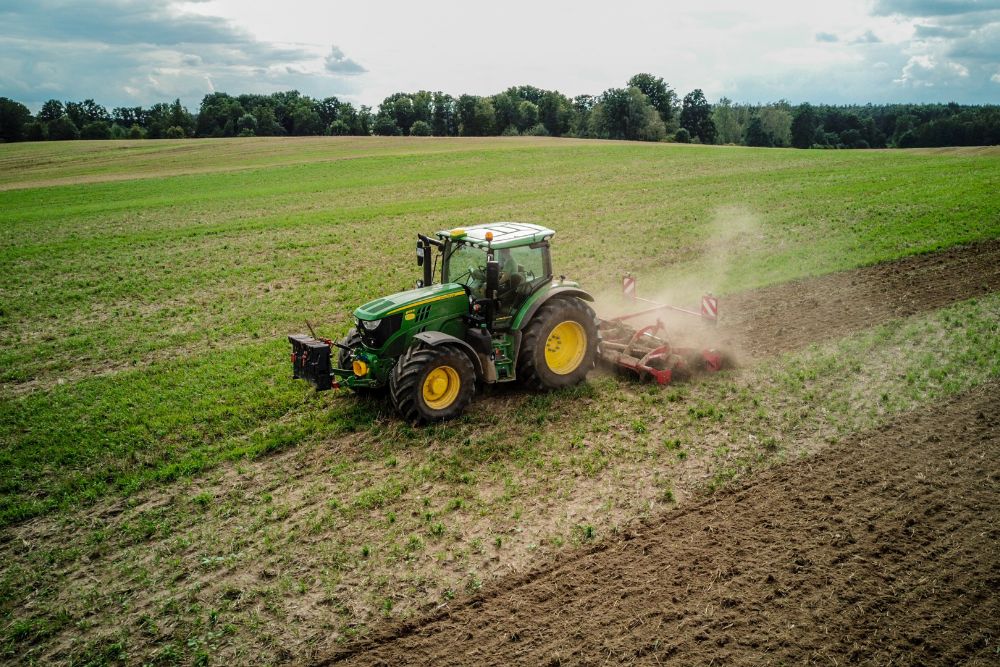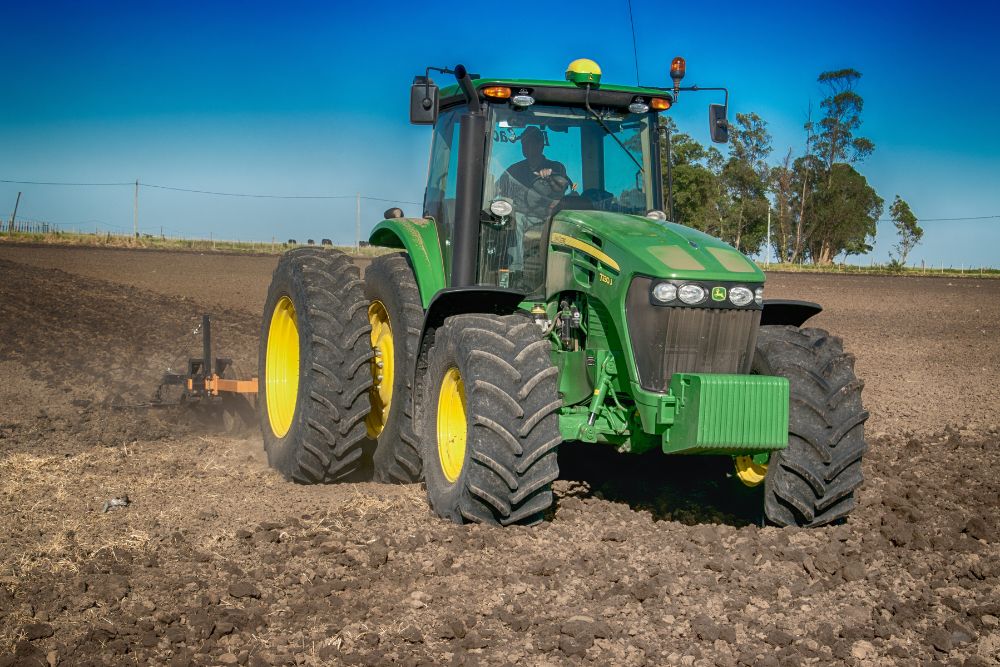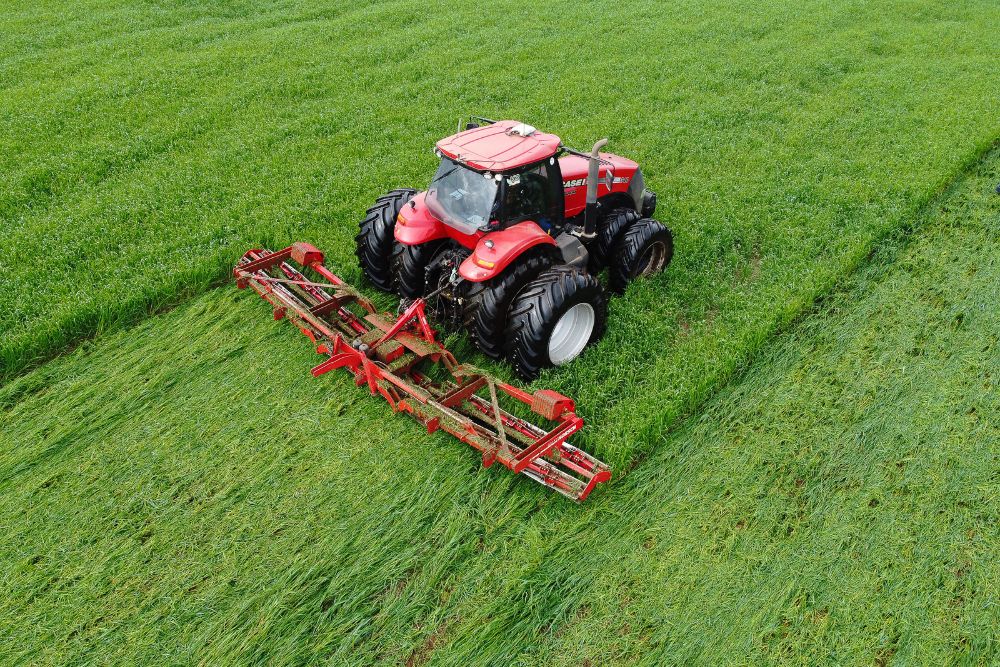Buying Used Tractors: What to Look for Before You Commit

Buying a pre-owned tractor is a good option for countless landowners, homesteaders, and farmers—particularly if your budget is limited but the work still needs to be done. A used tractor that is in good working condition could provide decades of reliable service for a fraction of the cost of a new machine.
Naturally, purchasing used involves some degree of risk if you do not know what items to check. I will explain what to look for while buying a used tractor, including the tractor’s mechanical systems, overall cosmetic condition, signs of work performance, and smart questions to ask the seller. When finished, you should be ready to make a smart purchase.
Why Purchase a Used Tractor?
The case for purchasing used is simple—cost, proven models, and simplicity.
- Cost is the most common reason most buyers buy used equipment. A new compact tractor can run between $15,000 and over $50,000, and a good used tractor may cost as low as $4,000–$20,000 depending on condition, horsepower, and attachments.
- Many older tractors such as the Ford 8N, Massey Ferguson 135, or John Deere 4020 have now earned a reputation for being nearly indestructible. In addition, these older tractors tend to be simpler, typically limiting the number of electronics, making repairs for a hands-on owner much easier.
- Moreover, used tractors also provide access to vintage or discontinued models that are not available new but have a strong following and plenty of available parts.
Used Tractor Inspection Checklist

So let’s take apart all of the things you may want to check before purchasing a used tractor.
1. An Overall Assessment of Condition
- Walk around the tractor completely.
- Check for rust on the frame, around the engine block, fenders, and undercarriage. Some surface rust may not be a dealbreaker, but deep rust is indicative of a structural problem.
- Look at the paint and body panels. The paint job may not be a more recent job, or it could be a cover-up for damage. See what is below and get a better idea of what is happening.
- Look for any leaks—engine oil, coolant, transmission fluid, and hydraulic fluid. A leak under the machine or even at a major joint could indicate that something is going on internally.
2. Engine Condition
- The engine is the most expensive item to purchase; therefore, don’t cut corners.
- If possible, start the tractor cold and see how it starts and runs. If it has a hard start and rough idle at startup, this can indicate some sort of compression or fuel delivery issue.
- Watch the exhaust for color change. A small puff of smoke at start will be normal. Continuous black smoke may indicate excess fuel; if the smoke is blue, it may indicate that the engine is burning oil, and white could mean that coolant is getting into the cylinders.
- Look at the oil color and level. If the oil appears milky or frothy, it is likely contaminated with water.
- Air intake, radiator, belts, and filters—are they functioning properly?
3. Transmission and Clutch
- If possible, test the transmission under load.
- Run it through all the gears and look for signs of slipping, grinding, or hesitation.
- Also watch how the clutch engages and disengages. A worn clutch could continue to operate, but it might need to be replaced in the near future.
- If the tractor has a power shuttle, hydrostatic, or CVT transmission, test forward/reverse transitions and variable speed control.
4. Hydraulic System, 3-Point Hitch
- Hydraulics are key if you plan to use implements.
- Check for leaking hoses, loose fittings, or damaged cylinders.
- Raise and lower the 3-point hitch. It should respond smoothly, without delay or jerk.
- If available, test the auxiliary hydraulic outlets by hooking up an implement.
5. PTO (Power Take Off)
- The PTO powers many types of attachments such as mowers, balers, tillers, augers, etc.
- Start the PTO and listen for smooth engagement.
- Verify it gets up to rated RPM and that the unit does not slip or disengage under pressure.
- Check the PTO shaft and housing for wear or damage.
6. Tires and Rims
- Tires can be pricey; at times, they may account for a third of the total tractor value.
- Check tread depth and irregular wear for all of the tires.
- Make sure to inspect the sidewalls for dry rot, bulges, or cracking.
- Inspect rims for damage or weld repairs, especially around valve stems and bolt holes.
7. Steering and Braking
- Turn the wheel lock to lock; excessive play or excessive stiffness means worn components or issues in the steering gearbox.
- Run the brakes through the process; they should engage evenly and stop the tractor without pulling one way or another.
8. Hour Meter and Controls
- The hour meter gives a good general idea of use but may not always be reliable.
- A carefully maintained tractor can be better than a poorly maintained tractor with less than one-third the hours.
- Take a look at the various control levers, knobs, and switches. If they feel worn or sticky, it indicates internal wear and tear or is an indication the seller used and abused it.
Questions to Ask the Seller:
- Why are you selling it?
- How long have you owned it?
- What work has it been used for (mowing, tilling, loader work, etc.)?
- Has the engine ever been rebuilt?
- Are you aware of any mechanical issues?
- Do you have any service records or receipts for service?
These questions will let you know if the seller maintained this machine and took care of it, or if it was simply used until it died. If the seller dodges questions or does not want you to operate the tractor, that is a red flag.
Where to Buy Used Tractors

Dealerships
A reputable dealership may sell used tractors that have been inspected, repaired (possibly), serviced, and could even be offered with a short-term warranty. You will likely pay more for the tractor, but the purchase is typically worth it for the peace of mind it gives you.
Websites
Websites like tractorhouse.com, Craigslist, and Facebook Marketplace will give you an opportunity to explore local or national used tractor listings. Again, be sure to inspect the tractor in person before committing to the purchase.
Auctions
Farm auctions can be a good place to buy used tractors, but they are typically more risky. Most auctions have an as-is clause meaning you must take the tractor home with no options to test or inspect. Know the model you are looking at before you bid, create a plan ahead of time, and most importantly, have a budget in mind—stick to it!
Maintenance After Purchase
Once you purchase the used tractor, the first thing you should do is service the machine. Complete the following:
- Change the oil and oil filter
- Change the fuel filter
- Change the air filter
- Change hydraulic fluid and trans fluid
- Grease any grease points and inspect hoses and belts for wear
- Inspect battery and clean terminals
- Test all safety switches, lights, and emergency shut-offs
In Conclusion
Buying a used tractor can be a great investment if you take the opportunity to inspect and ask the right questions during the purchasing process. Do not be so naive to get blinded by a sharp paint job or low-hour meter. Rather, inspect the major mechanical systems and wear patterns. Also, inspect how the tractor operates when under stress or load.
If you have never purchased a tractor, bring along your mechanic or an experienced farmer. Their opinion could save you thousands in repairs later.
If you take diligence in your purchasing process with your mechanic, you should be able to find a used tractor that provides reliable and efficient service for years to come—and it remains cost-effective to your operation.
